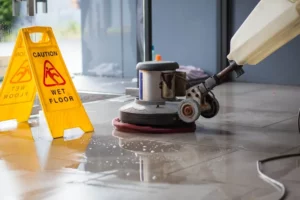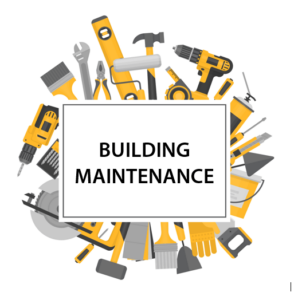

In a Triple Net Lease, Tenants Pay for Their Share of Building Operating Expenses.
Our brokerage has been involved with hundreds and hundreds of lease transactions that our firm has successfully executed. The most common question our Brokers and Property Managers get asked by tenants is: “What are Common Area Maintenance Fees?”
In this blog post, we will offer a more detailed explanation of what Common Area Maintenance (commonly referred to as CAM) fees are, what they include, who is responsible for paying them and options for tenants to negotiate these charges in their business’s favor if applicable. Bend, Oregon is a triple-net lease town where CAM is in most leases. Experienced Commercial Property Owners and Property Managers like to keep and maintain the integrity of the client’s investment and a triple-net lease is a type of lease that absolves the Landlord of the most risk of any net lease. This means that even the costs of structural maintenance and repairs must be paid by the tenant(s), in addition to base rent, property taxes, and insurance premiums. Because these additional expenses are passed on the Tenant, the Landlord at times is more likely to negotiate his base rent if expenses are passed back in a prorata share. Triple-net leases can help reduce investment risk in Commercial properties and provide a steady and predictable income from credit worthy Tenants. A triple net lease is different from other types of net leases, such as single net, and double net, modified gross lease, which require the Tenant to pay only some of the property expenses.
In a full service gross lease, CAM fees are included in the base rent payment that the Tenant makes per month to the Landlord.
What are Common Area Maintenance Charges?
As you can see, in a triple-net lease (NNN) CAM charges go along with such a lease. You have your base rent amount and then the additional charge monthly for the CAM expenses. Simply stated, CAM fees cover operating expenses for shared areas of the building you are leasing and for a prorata share of the square footage you are leasing. These are paid by the Tenant to the Landlord so that the owner can recoup the costs associated with operating and maintaining the communal areas within a commercial building or campus.
These fees cover costs for things like landscaping, parking lot maintenance, window washing, and janitorial services for lobbies and restrooms, repairs to common areas and more.
What’s Included in CAM Expenses?
What’s included in a Tenant’s CAM fees can very from building to building and Landlord to Landlord, so it is important for Tenants to carefully read their leases, work with experienced and professional Commercial Brokers and Property Managers and understand what their CAM entails. Industrial and Retail Tenants will also see a very different list of CAM items due to the naturae of their businesses and the buildings or Centers they typically occupy.
For Office, Industrial and Retail Tenants, ( and can carry over to other types of properties) it is ordinary to see the following items included in CAM expenses but not limited to:
- Lighting
- Water for irrigation, drinking and restrooms
- Landscaping
- Parking Lot Maintenance
- Administrative Fees
- Sidewalks
- Driveways
- Stormwater Management
- Utilities
- Janitorial Services
- Management Salary and Fees
- Sewage
- Window Washing
- Maintenance
- Elevator Maintenance
- Taxes
- Insurance
- Retail could have marketing costs as part of CAM if in a interior mall or designated Shopping Center area
How are CAM Expenses Calculated?
Typically CAM reconciliations are done at the end of the year-into the first quarter of next year. CAM is an estimate of the expected CAM expense as part of the building’s annual budget. All operating expenses for that year are reconciled and the portion of the overall CAM expense the Tenant is responsible for paying is determined by the percentage of the square footage they occupy in the gross leasable area of the building. Once reconciled, the Tenant will either be billed for their portion of any overages or credited any excess paid.
Good Commercial property managers should be able to see any potential overages and keep reserves on hand for any repairs necessary to the building and have a keen eye to keep CAM expenses from being extremely variable year after year and to prevent the pain of a Tenant writing an unforeseen, large check for a lump sum upon reconciliation.
Can CAM Expenses Be Negotiated?
Since CAM expenses are a reimbursement of costs incurred by the Landlord throughout the year, typically they are not negotiable. We do see at times where a Tenant or a Tenant’s representative will ask for the CAM expenses to be “capped” for a period of time, again, they are usually not negotiable. It is not unusual if you are looking at leasing a space to ask the Landlord for a CAM expense breakdown so you know what expenses are being passed back and how much the “Additional Rent” for the CAM will be. It is also important to remember that some expenses, such as security costs, utilities and snow removal expenses for example, are considered “uncontrollable” especially if the year has quite a few storms and lots of snow that increases the costs for snow removal.
Fratzke Commercial and Fratzke Property Management loves to answer your questions, so please feel free to call us at (541) 306.4948 and our Brokerage and Property Management Department will always be happy to answer any questions that you have.


